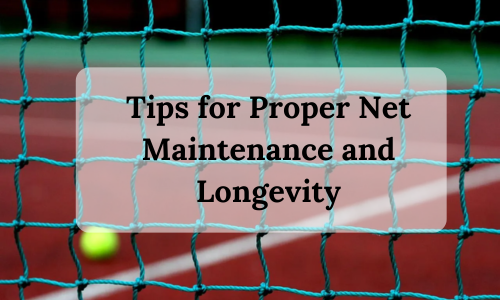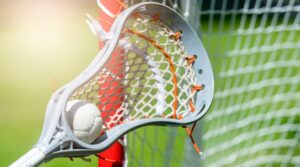In industries where nets are essential, whether for protection, containment, or organizational purposes, the design and choice of nets play a significant role in ensuring both efficiency and safety. Nets can be used in construction for fall protection, sports for goal-scoring or boundary marking, or in agricultural and fishing industries for containing animals or harvesting fish. Regardless of the application, having a net designed for maximum performance is critical. This article explores key aspects of optimizing net design, from choosing the right materials to ensuring durability and safety, while also emphasizing the importance of collaborating with a reliable net manufacturer. Nets Depot Inc, a trusted net supplier, provides expert guidance in delivering high-quality net solutions tailored to diverse industry needs.
Why Net Design Matters
A well-designed net can be the difference between a smooth-running project and one that faces frequent operational hiccups. When nets are poorly designed, not only can they lead to inefficiencies, but they can also pose safety risks. In fields like construction, where nets are often used for fall protection or catching debris, subpar designs can endanger workers’ lives. In contrast, an optimized net design ensures that the net can effectively meet its intended purpose, offering protection, durability, and efficiency. Collaborating with an experienced net manufacturer can significantly reduce these risks. Nets Depot Inc. specializes in crafting nets that meet the highest industry standards, ensuring both safety and efficiency for a variety of applications. Read it also:- Different Types of Cargo Net Webbing and Their Best Applications
Choosing the Right Material
The material used in a net’s construction is pivotal to its overall performance. Different applications require different materials based on durability, weight, strength, and flexibility. For example, a fishing net designed for catching heavy loads will require a different material from a sports net used to define a soccer field’s boundaries.
Factors to Consider:
- Application: Different uses call for different types of nets. Understanding the environment and purpose of the net helps determine which material will work best.
- Strength: The tensile strength required to support the weight or force exerted on the net.
- Durability: How well the material withstands wear and tear, especially in harsh conditions (like UV exposure or saltwater).
- Flexibility: The ability of the material to stretch and recover, which is essential for applications where force or weight might vary.
- Cost-effectiveness: The price of the material in relation to its expected lifespan and performance.
Types of Netting Materials:
Here’s a brief overview of commonly used netting materials, their properties, and their applications:
| Material | Application | Strength Level | Durability | Weather Resistance |
|---|---|---|---|---|
| Nylon | Sports nets, safety nets, cargo nets | High | Excellent | Moderate to High |
| Polypropylene | Agriculture, marine applications | Moderate to High | Good | High |
| Polyethylene | Fishing, industrial nets | High | Good | Excellent |
| Steel Wire | Construction, industrial applications | Very High | Very High | Moderate to High |
Each material has its pros and cons, so it’s essential to choose one that aligns with the specific demands of your project. A professional net manufacturer like Nets Depot Inc. can guide you in selecting the right material to optimize both the safety and efficiency of your net.
Designing for Specific Applications
Nets are used across many industries, and each application requires careful attention to detail to ensure the design meets specific needs. Here’s how net design can be optimized for various fields:
➤ Construction Nets
In construction, nets are primarily used for two reasons: fall protection and debris containment. Fall protection nets, often seen in high-rise building projects, must be able to withstand the weight of a falling worker while also absorbing the shock to minimize injury. Similarly, debris containment nets prevent construction materials from falling to lower levels, protecting workers and pedestrians below. Key Design Features:
- High tensile strength: To support the weight of a falling worker.
- Shock absorption: A design that distributes impact to reduce injury risks.
- UV resistance: Essential for outdoor projects to ensure longevity.
- Fire retardant properties: Especially in high-risk industrial projects.
➤ Sports Nets
Whether it’s a soccer goal, tennis court, or basketball hoop, sports nets are integral to the structure of many games. These nets must be designed to offer visibility, flexibility, and durability while ensuring the safety of players. 
- Visibility: The net must not obstruct the player’s or viewer’s line of sight.
- Flexibility: The net should bounce back to its original shape after being hit by a ball.
- Weather resistance: Outdoor sports nets need to withstand exposure to the elements.
➤ Marine and Fishing Nets
For those in the fishing industry, net design is essential for the success of the catch. Nets used in marine applications face constant exposure to saltwater, UV rays, and the abrasive conditions of the ocean floor. As a result, durability and strength are top priorities in marine net design. Key Design Features:
- Saltwater resistance: Materials like polyethylene and polypropylene are excellent for resisting the corrosive effects of saltwater.
- Strength: The net must be capable of withstanding the weight of large catches without tearing.
- Customizable mesh size: Ensures the net targets specific fish sizes while allowing smaller species to escape.
➤ Agricultural Nets
In agriculture, nets are commonly used for bird protection, livestock containment, and crop management. The challenge here is to balance strength with light weight, allowing for easy installation and movement around crops and animals. Key Design Features:
- Pest and bird resistance: Small mesh sizes prevent pests and birds from damaging crops.
- UV stability: Nets used outdoors must be able to withstand prolonged sun exposure.
- Lightweight: Easier installation and mobility are crucial in agricultural applications.
Safety Considerations in Net Design
Safety should always be the first consideration in net design, especially in industries like construction and sports, where people’s lives may be at risk. Here are key factors to ensure a net meets safety requirements:
➤ Load Capacity
Every net must be able to hold the weight or force it’s designed to handle. For instance, fall protection nets in construction must be able to catch a worker’s full body weight without breaking.
➤ Mesh Size
The size of the net’s mesh is vital to prevent objects or people from slipping through. For example, a safety net for catching debris should have a small enough mesh to ensure that nothing can pass through, while a sports net may have larger holes.
➤ UV Resistance
Many nets are exposed to direct sunlight for extended periods, which can degrade materials over time. UV resistance prolongs the lifespan of outdoor nets, ensuring that they continue to function safely without deteriorating quickly.
➤ Fire Retardant Properties
In industries where fire hazards are present, having a fire-resistant net is a necessity. Fire retardant materials help prevent the spread of fire, providing an extra layer of safety in high-risk environments.
Maximizing Efficiency in Net Design
Optimizing a net for efficiency means designing it in such a way that it reduces labor, time, and material costs while performing its function effectively.
➤ Customization
The ability to customize the size, shape, and material of the net to fit the specific demands of your application is essential. For example, a custom-designed net for fall protection in construction may require additional anchoring points and extra-strength materials, while a marine net may need extra corrosion resistance.
➤ Durability
A well-designed net should be made from materials that are strong enough to last for years, reducing the need for frequent replacements. High-quality materials and thoughtful design can drastically improve a net’s lifespan, saving money in the long run.
➤ Ease of Use
Efficiency can also be enhanced by designing nets that are easy to install, remove, and transport. Lightweight, foldable designs can make a huge difference in industries where nets need to be frequently moved.
➤ Weight Considerations
While heavier nets may offer greater durability, they can also be more cumbersome to handle. Balancing strength with weight is key in optimizing net design for efficiency.
Importance of Working with a Reliable Net Manufacturer
Collaborating with a trusted net manufacturer like Nets Depot Inc guarantees that your net is crafted to meet the specific demands of your industry. From material selection to design consultation, working with an experienced manufacturer ensures that the nets are both efficient and safe.
At Nets Depot Inc., we take pride in offering:
- Customized Solutions: Our nets are designed with your specific application in mind.
- High-Quality Materials: We source only the best materials to ensure durability and performance.
- Industry Expertise: With years of experience, we understand the unique needs of different industries and can offer expert recommendations.
Tips for Proper Net Maintenance and Longevity
To ensure your nets remain effective and safe for the long term, regular maintenance is key. Here are some tips to help you prolong the lifespan of your nets:
- Regular Inspections: Check for wear and tear, especially in high-stress areas.
- Cleaning: Wash nets exposed to harsh environments (saltwater, construction debris) to prevent material degradation.
- Proper Storage: When not in use, store nets in a dry, cool place to avoid exposure to damaging elements.
- Timely Repairs: Fix minor tears or frays before they become larger issues.
- UV Protection: Apply UV-resistant sprays for nets that are regularly exposed to sunlight.
FAQs
1. How do I choose the right material for my net? Choosing the right material depends on the net’s application. For instance, nylon is excellent for sports nets due to its flexibility, while polyethylene is more suitable for fishing because of its saltwater resistance. Moreover, consult with a professional net manufacturer to determine the best material for your needs.
2. How often should I replace my nets? The lifespan of a net depends on its material, exposure to the elements, and frequency of use. Regular inspections and proper maintenance can extend the life of your net. However, if you notice significant wear and tear, it’s time to replace it to ensure safety.
3. Can I customize the design of my net? Yes! Customization is one of the primary services offered by Nets Depot Inc. So, we work closely with our clients to design nets tailored to their specific requirements, including size, material, and mesh density.
4. What is the best net for outdoor use? For outdoor applications, materials like polyethylene and polypropylene are ideal due to their weather resistance, particularly their UV resistance. Also, discuss your outdoor netting needs with a net manufacturer to choose the best option.
Contact Us
For top-quality, customized nets that prioritize both efficiency and safety, get in touch with Nets Depot Inc today. We are committed to providing the best net solutions for your industry. Whether you’re looking for construction, sports, marine, or agricultural nets, we’ve got you covered.
- Email: [email protected]
- Phone: (305) 215-5579
Let Nets Depot Inc. help you secure the right net for your project, ensuring durability, safety, and optimal performance!





